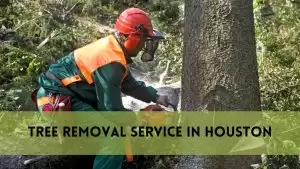Removing a palm tree may become necessary due to various reasons, such as safety concerns or landscape changes. However, it's crucial to approach the task with caution and proper knowledge to ensure safe and successful removal. In this comprehensive guide, we will walk you through the process of removing a palm tree, providing valuable insights and expert tips every step of the way.
Table of Contents
I. Assessing the Tree:
Before embarking on the palm tree removal journey, it's essential to assess the tree's condition and stability. Different palm tree species require distinct removal techniques. Identifying the species and evaluating its health will help determine the most appropriate approach for removal. Additionally, surveying the surrounding area for potential hazards ensures a safer environment during the removal process.
II. Acquiring Permits and Hiring Professionals:
Before you proceed with removing a palm tree, be sure to check local regulations and obtain any necessary permits. In some areas, specific permissions might be required for tree removal. Hiring certified arborists or tree removal experts is strongly recommended, especially for larger or more complex removals. Their expertise ensures the job is done safely and efficiently.
III. Preparing for Palm Tree Removal:
Gathering the right tools and equipment is crucial for a smooth removal process. Tools like pruning saws, ladders, and protective gear are necessary for safely cutting and removing the tree. Organizing a safe work area and communicating effectively with professionals involved in the removal process ensures coordination and minimizes any potential risks.
IV. Tree Removal Process:
Clearing the area around the palm tree is the first step in the actual removal process. By removing any obstacles or objects that may impede the tree's descent, you create a safer working environment. Carefully cutting and removing fronds and branches before proceeding to the trunk significantly reduces the tree's weight and makes the cutting process more manageable. Employing proper cutting techniques and safety measures, the trunk can then be safely cut down. Finally, removing the stump completes the tree removal process.
V. Post-Removal Care:
Once the palm tree has been successfully removed, proper disposal of tree debris is crucial. Disposing of the debris responsibly helps maintain cleanliness and safety in the surrounding area. Additionally, filling the hole left by the tree's removal and levelling the ground ensures a smooth and aesthetically pleasing landscape. Conduct a thorough inspection of the surrounding area to ensure no potential hazards or damage were left behind.
VI. Tree Removal Alternatives:
While removal may be the most suitable option in some cases, it's worth considering alternatives to completely removing a palm tree. Transplanting the palm tree to a different location is one option to preserve its beauty and environmental benefits. Exploring opportunities for tree relocation or reuse contributes to sustainability and adds value to the overall landscape.
Conclusion:
Removing a palm tree requires careful planning, adherence to safety protocols, and sometimes the assistance of professionals. By following the step-by-step guide outlined above, you can confidently approach the task, ensuring the safe and successful removal of a palm tree. Prioritize safety, consider professional assistance when needed, and embark on your palm tree removal journey with confidence. Remember, removing a palm tree is not just about eliminating a structure; it's about shaping your landscape and creating a safer environment for all.




